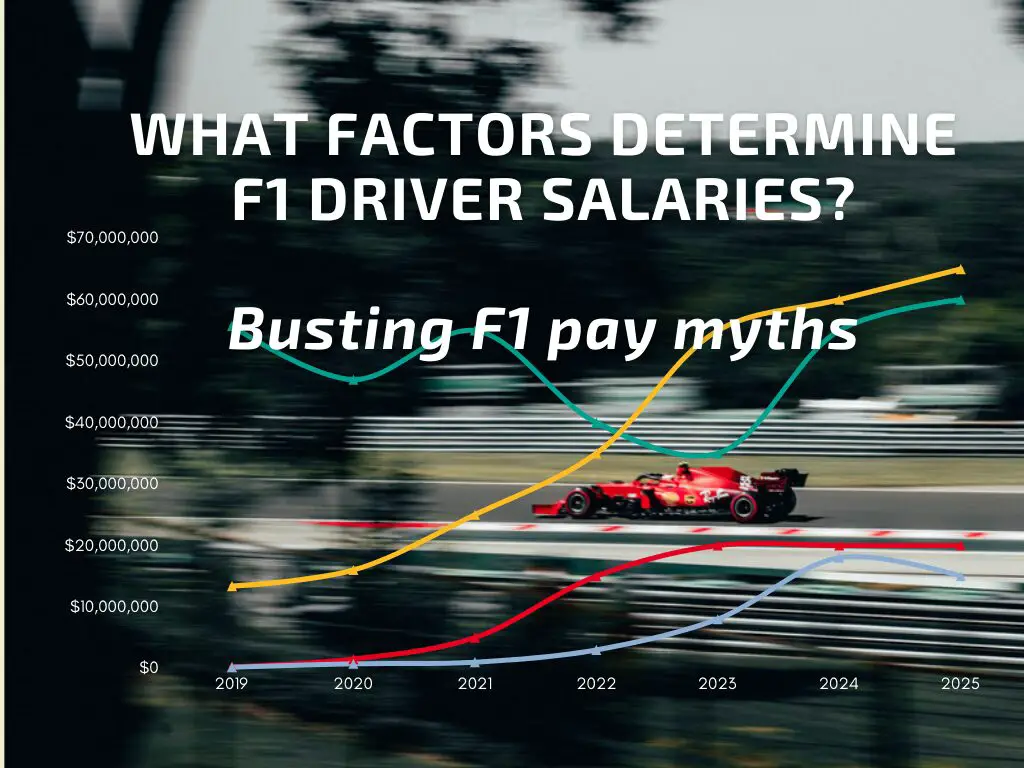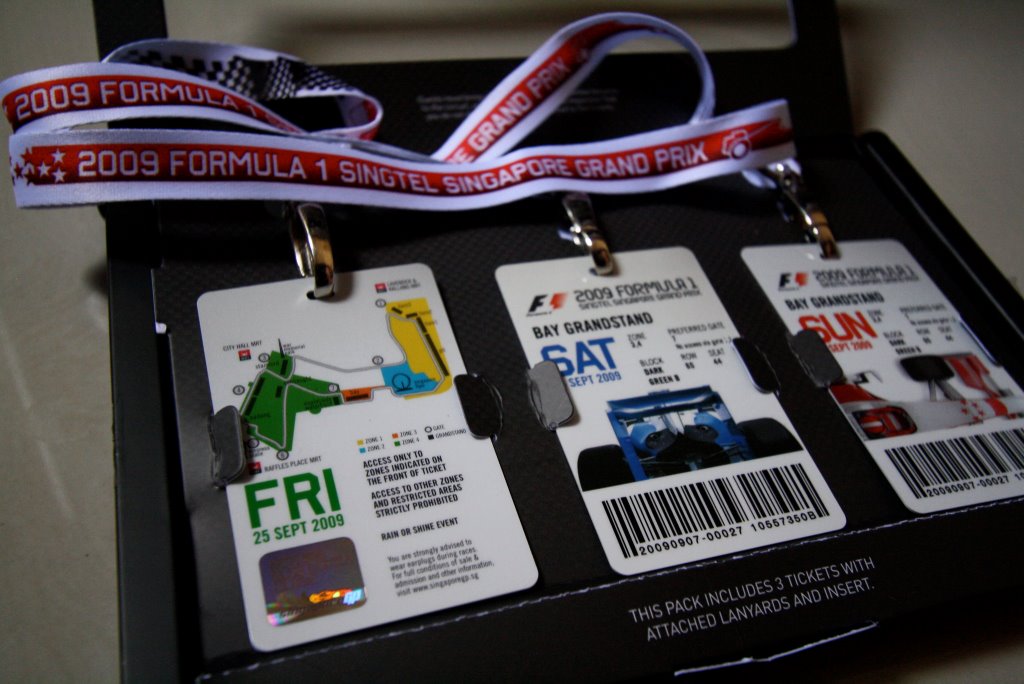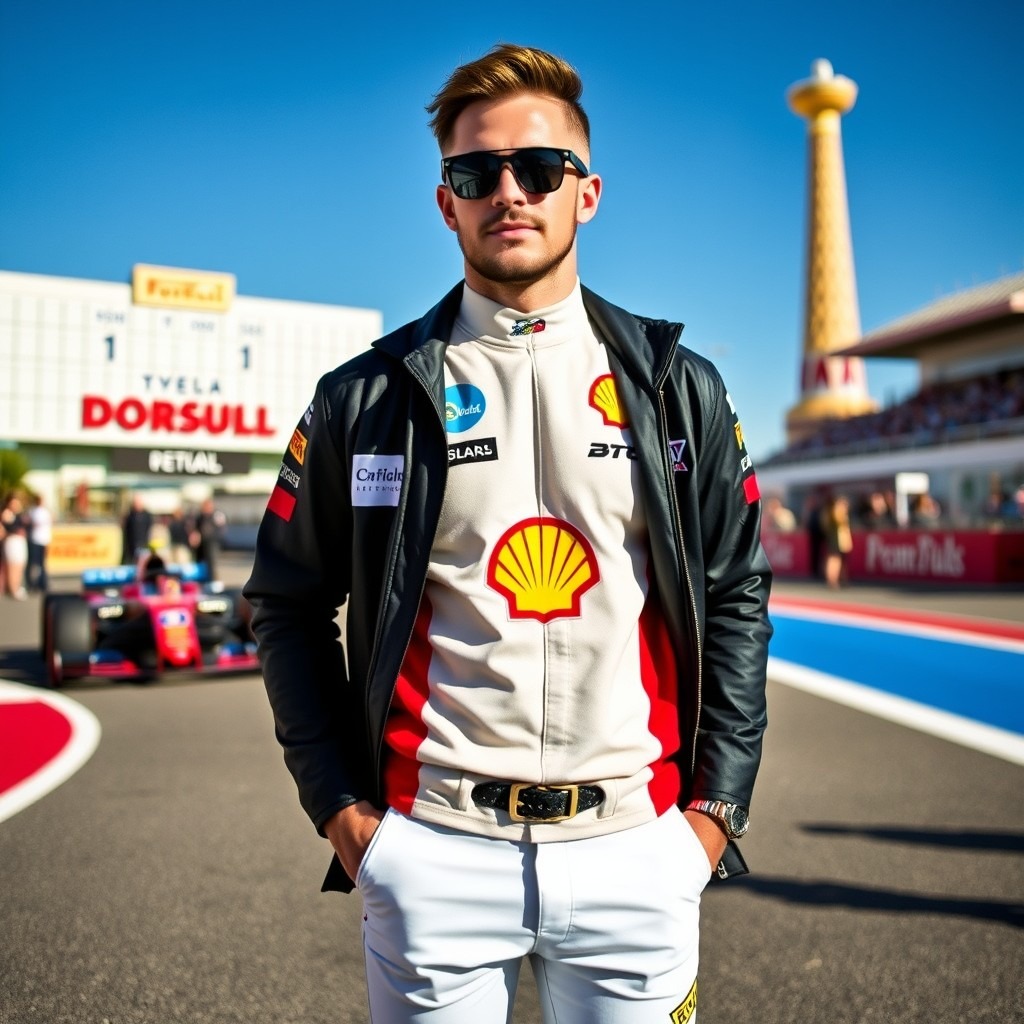Think rookie F1 drivers start with million-dollar contracts in the glamorous world of motorsport, right? Think again. The headlines scream out wild figures $65 or even $100 million salaries for superstar drivers! However, beneath the sheen lies a more nuanced story of rookie paychecks that can start as low as just under $1 million, far removed from the towering salaries of the sport’s elite. This disparity is shaped by sponsor deals and varied team agreements.
Consider Lewis Hamilton, who is rumored to earn a $60 million base salary in 2025 (with the potential to earn much more with bonuses). Meanwhile, rookies like Isack Hadjar, Franco Colapinto, and Oliver Berman earned closer to $1 million. That’s still a lot of money, but in Formula 1 terms, that’s an entry-level lap fee.
Here’s the twist: this isn’t just trivia—it’s a window into how careers accelerate (or stall), how deals get done, and what it means to start at the very back of the grid.
What gives? Let’s break the biggest salary myths, strip away the c, and explore why pay differs so wildly.
- Myth #1: F1 Drivers Are the Highest-Paid Athletes in the World
- Myth #2: Every F1 Driver Earns a Megabucks Paycheck
- Myth #3: All Reported Numbers Capture Total Driver Earnings
- Myth #4: Rookie Drivers Earn Less Just Because They Lack Experience
- Myth #5: Rookie Salaries Depend on the Team
- For Beginners: What These Salaries Reveal
- Have F1 Driver Salaries Been Rising in Recent Years?
- Why F1 Costs What It Does
- FAQ for F1 Newcomers
Myth #1: F1 Drivers Are the Highest-Paid Athletes in the World
Okay, let’s take a closer look at the numbers. While superstar pay is a reality in F1, within the broader world of sports, athletes in some other sectors—such as football—often out-earn even the top F1 drivers.
Verstappen is indeed the top-paid driver in 2025, earning an estimated $65 million base salary from Red Bull (bonuses and endorsement extras not included).
Lewis Hamilton isn’t far behind, reportedly earning a $60 million base from Ferrari for the same season.
But here’s the kicker:
Cristiano Ronaldo leads 2025 pay charts. He’s earning about $225 million in salary! Eye-watering? We get it! Сheck Forbes’ World’s 10 Highest-Paid Athletes 2025.
Reality?
To put it plainly: Verstappen is a motorsport king, but compared to top footballers like Ronaldo, he earns less. However, within F1 driver salaries in 2025, he’s the undisputed champ.
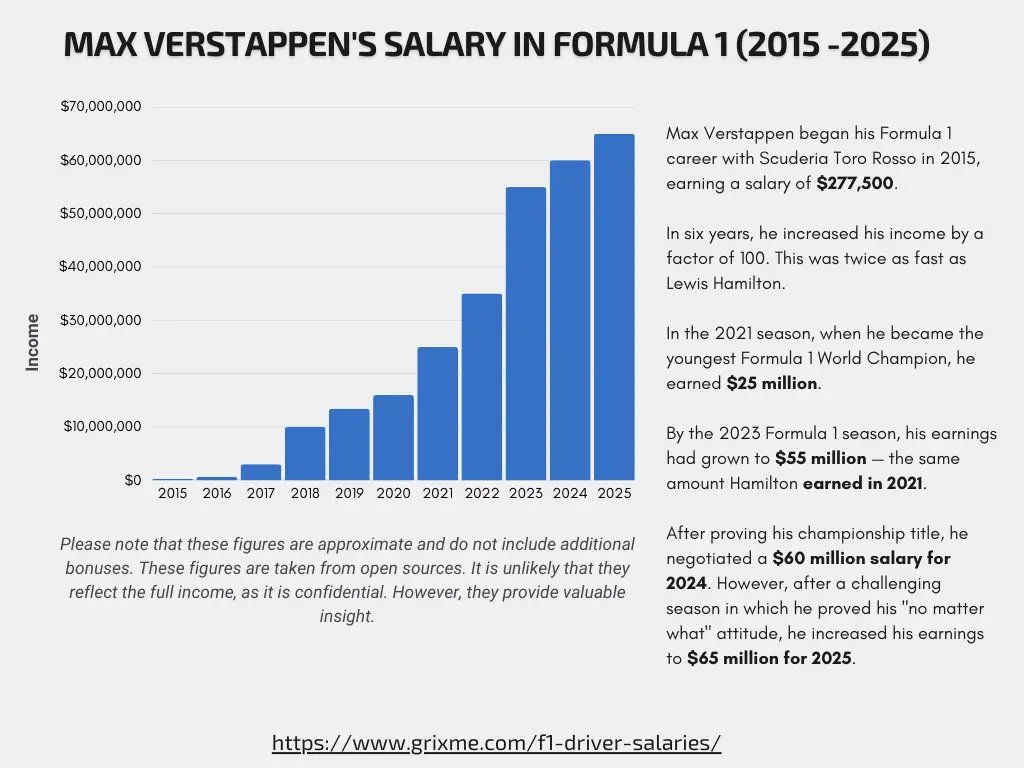
Myth #2: Every F1 Driver Earns a Megabucks Paycheck
Not every driver rolling in F1 is raking in superstar cash. Sure, names like Verstappen, Hamilton, and Alonso sit at the summit, but rookie paychecks? That’s a whole different story.
2025 F1 Driver Salaries: Who Earns What?
Here’s the full lineup, based on RacingNews365 figures. These are base salaries only! There aren’t the potential windfalls from bonuses or sponsorships. So, when you search for “F1 salary breakdown 2025,” you’re just seeing the tip of the iceberg.
| Rank | Driver | Team | Estimated Base Salary (USD) |
|---|---|---|---|
| 1 | Max Verstappen | Red Bull | $65 million |
| 2 | Lewis Hamilton | Ferrari | $60 million |
| 3 | Charles Leclerc | Ferrari | $34 million |
| 4 | Fernando Alonso, Lando Norris | Aston Martin, McLaren | $20 million each |
| 6 | George Russell | Mercedes | $15 million |
| 7 | Carlos Sainz, Pierre Gasly | Williams/Alpine | $10 million each |
| 8 | Alex Albon | Williams | $8 million |
| 9 | Nico Hülkenberg, Esteban Ocon | Sauber/Haas | $7 million each |
| 10 | Oscar Piastri | McLaren | $6 million (base) |
| 11 | Lance Stroll | Aston Martin | $3 million |
| 12 | Yuki Tsunoda, Kimi Antonelli, Gabriel Bortoleto | Racing Bulls / Mercedes / Sauber | $2 million each |
| 13 | Franco Colapinto | Alpine | $1,5 million |
| 14 | Oliver Bearman, Liam Lawson | Haas / Red Bull | $1 million each |
| 15 | Jack Doohan, Isack Hadjar | Alpine / Racing Bulls | $500K–$1 million |
The Reality: The Grid’s Not a Flat Pay Scale
The bottom-tier rookies earning under $1 million pull in around 1/65th of what Verstappen makes. That’s more than just a gulf; it’s a pay canyon.
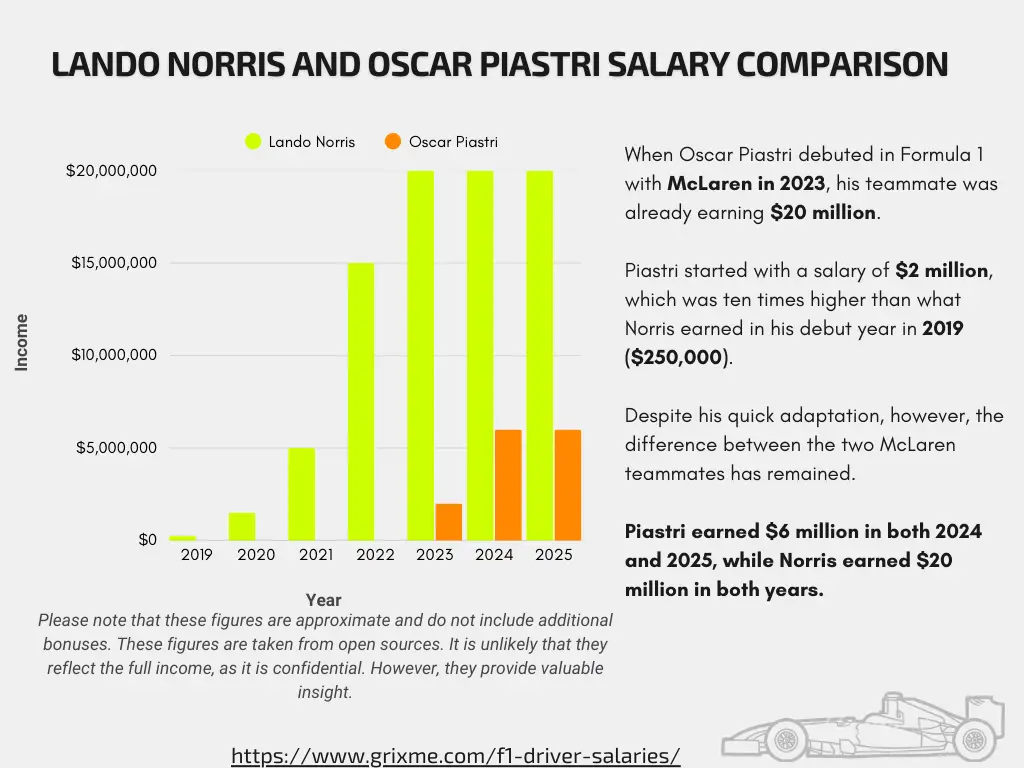
Myth #3: All Reported Numbers Capture Total Driver Earnings
Spoiler Alert: Those eye-popping salary figures you’ve seen? They’re often just the base layer. The real story lies in what’s added on top—and why those extras are often hidden from headlines.
The Myth-Busting Breakdown
So, what do you see in headlines?
Charles Leclerc’s rumored $34 million base salary for 2025; Oscar Piastri’s previous base was around $6 million, and so on. But what’s not immediately obvious: these figures generally exclude performance bonuses, endorsements, and sponsorship income.
How F1 Driver Pay Actually Works: Base vs. Bonuses
Think of an F1 driver’s earnings as a fancy (money) lasagna, layered and rich. Not just a single, hefty number, where:
Base Salary – The Anchoring Layer
This is the guaranteed annual amount a team pays a driver. These are estimates because F1 contracts are typically confidential. What we do know is based on reliable industry sources.
Performance Bonuses – The Secret Sauce
Here’s where it gets interesting. Depending on their contracts, drivers earn extra money for achieving certain results, such as wins, podiums, poles, and championships.
But crucially, these bonuses are not part of the budget cap, so teams can still reward performance without hitting regulatory limits.
Budget Cap Exemption, what?
Yes, here’s something controversial. Formula 1 introduced a $135 million team budget cap to level the playing field. However, driver salaries and other significant expenses are exempt from this cap. It’s similar to luxury-tax workarounds seen in other sports leagues. And this exemption in F1 also opens up avenues for teams to engage in fierce bidding wars for top talent. As Mercedes’ Toto Wolff puts it, a top driver can make all the difference on the track, even when the budget is tight.
And the topic’s hotter than a Vegas GP track, as “Driver compensation is exempt from the cost cap, so just have them pick up catering and make sure their salaries make up for it.”- F1 fans raising eyebrows on Reddit
However, these incentives can add millions more, pushing Verstappen’s total package north of $75 million.
Off-Track Income – The Hidden Layers
Drivers also earn money off the track. Consider sponsorships, media appearances, and personal branding. For example, Hamilton’s base income may be $60 million, but with endorsements and partnerships, his total income reportedly approaches $100 million.
That means the actual take-home can be much higher. Here are a few more details on the PlanetF1 insights.
Bonus & Endorsement Reality Check
| Driver | Base Salary | Estimated Total with Bonuses & Endorsements |
| Oscar Piastri | ~$6 million | ~$22–34 million (base + bonuses) |
| Max Verstappen | ~$65 million | ~$75 million (base + bonuses) |
| Lando Norris | ~ $20 million | ~$35 million with bonuses |
Feel the difference? We do. Moving forward.
Myth #4: Rookie Drivers Earn Less Just Because They Lack Experience
Are Rookies like Kimi Antonelli or Oliver Bearman low-paid due to some age tax? Hardly. It’s not about age, but it’s about the politics of pay, market leverage, and proven results.
What’s Really Driving Rookie Pay for?
Team leverage & negotiation power
Teams aren’t banking on rookies. With no proven record, beginners start with modest contracts. Teams are betting on their potential. Established stars? They bring visibility, sponsorship power, and podiums.
As one expert explains:
“There is value in paying a high price…but teams see all the numbers…and sign the contract because that’s the number they are expected to pay.” – Financial Times
Performance bonus models over base pay
The contracts of new drivers often favor performance-based incentives. For example, thanks to his stellar performance and McLaren’s Constructors’ Championship victory, Piastri reportedly earned over $17 million in bonuses, bringing his total income for 2024 near $22 million.
To put this into perspective, if we assume Piastri earned approximately $50,000 for each championship point he secured, it highlights the strategic value these bonuses offer to both the team and the driver. More recent reports suggest his 2025 contract brings him up to £20 million (~$25.8 million), on par with Norris.
Risk Management for Teams
Racing comes with costs: car crashes, development hiccups, and unpredictability. Since driver pay is exempt from the budget cap but construction costs aren’t, teams often start with rookies.
Star premium and branding power
Hamilton and Verstappen can pull in big bucks because teams know they attract sponsors, media eyeballs, and merch sales—all invaluable returns beyond lap times.
High ROI for Teams
A financial analysis placed Piastri among F1’s most cost-effective drivers, delivering top-tier performance while earning far less than the sport’s superstars. This makes him a rare—and valuable—commodity for teams on a budget looking for podiums and points without overspending.
Prove their speed and appeal, and token rookie contracts can flip fast—with dramatic pay upgrades waiting just around the paddock.
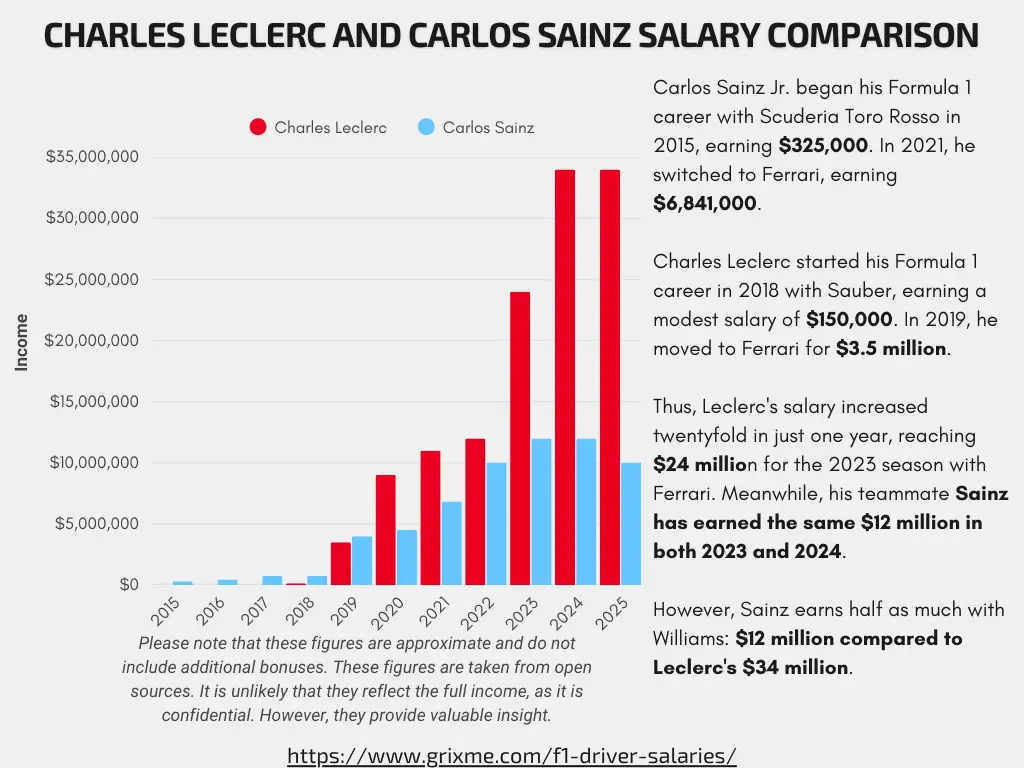
Myth #5: Rookie Salaries Depend on the Team
Nope, in Formula 1, a rookie’s pay isn’t primarily driven by which team they race for—it’s driven by what they bring to the table.
Here’s the reality: team budgets and star power matter—but when it comes to rookies, teams value potential, backing, and contract structure far more.
1. League-wide rules shadow the grid
Driver salaries and the three highest-paid staff members are completely exempt from Formula 1’s cost cap of ~$135–$140 million. Therefore, in theory, every team, including Mercedes and Williams, is free to set rookie pay without cap restrictions. Read the Chronicle’s Formula 1 Cost Cap’s spending regulations.
2. Sponsorship & pay drivers
Some rookies come with deep pockets or external sponsorship, as Sergio Perez did in his time. It can either supplement or replace a team paycheck. These “pay drivers” are common in lower-budget outfits, especially when funding is tight.
3. It’s about value, not the factory address
Teams will pay rookies more if they deliver junior championship results or if they have branding appeal. For example, George Russell and Alex Albon received higher pay in less competitive Williams. Conversely, a slow or unproven talent, regardless of team, earns less.
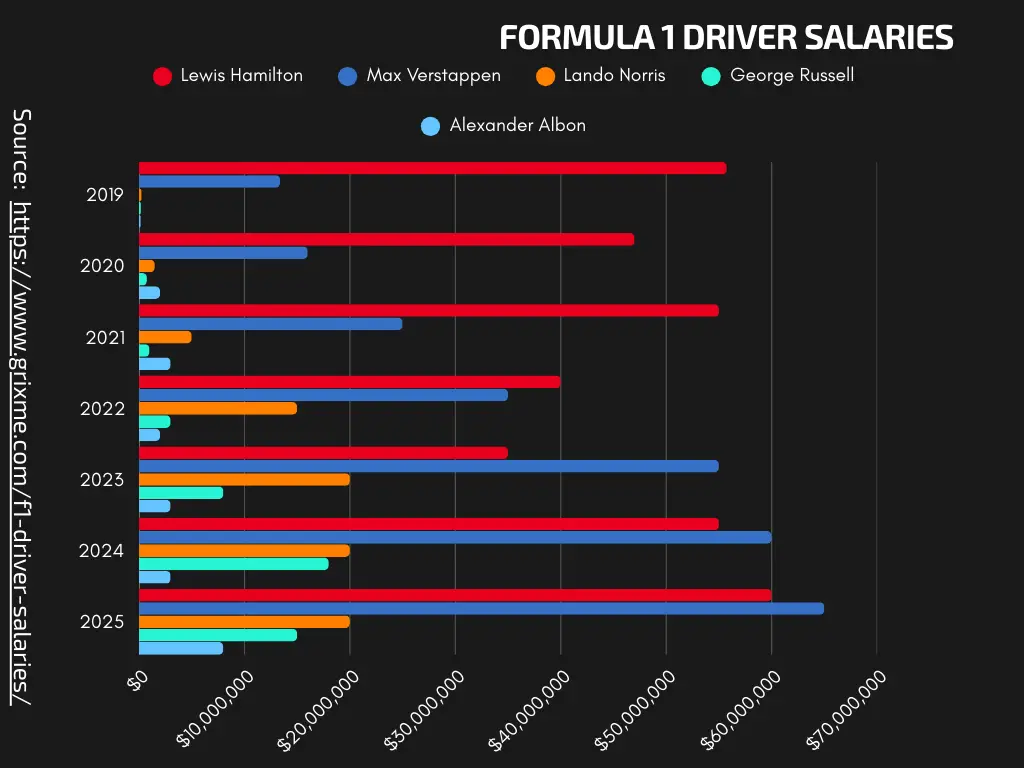
For Beginners: What These Salaries Reveal
Every figure on that pay scale is a story of status, strategy, and sometimes tension. Here’s what they tell us…
1. Performance Pays—Big Time
High-paid drivers like Verstappen and Hamilton aren’t just earning—it’s results that unlock real riches. Titles, podiums, and star power translate into huge pay packages.
2. Branding and Legacy Matter
Lewis Hamilton’s move to Ferrari is more than just an engineering change. It’s a marketing gold mine. His broader cultural impact, including endorsements, investments, and global appeal, adds significant value.
3. Sport-Wide Revenue Boom = Driver Wealth
F1’s bigger broadcast deals and growing fanbase mean more money in the pot. The drivers are cashing in on this.
4. Talent vs. Legacy: Age and Branding Still Matter
At 43 years old, Fernando Alonso earns top dollar from Aston Martin. Despite younger drivers closing in on him, his base salary is around $20 million. This demonstrates that leadership and marketability are valuable assets if you’re competitive enough.
5. Rookies Riding the Wave
Newcomers are still benefiting. Starting salaries of $1 million reflect the investments that teams are making in future stars.
6. Beyond the Contract—Hidden Windfalls
The headline numbers are just the beginning. Salaries are often supplemented by bonuses, endorsements, and branding opportunities that can triple a driver’s total income.
So, when you see, “Verstappen earns $75M,” that means he’s paid like a rock-star athlete—but it’s earned with wins.
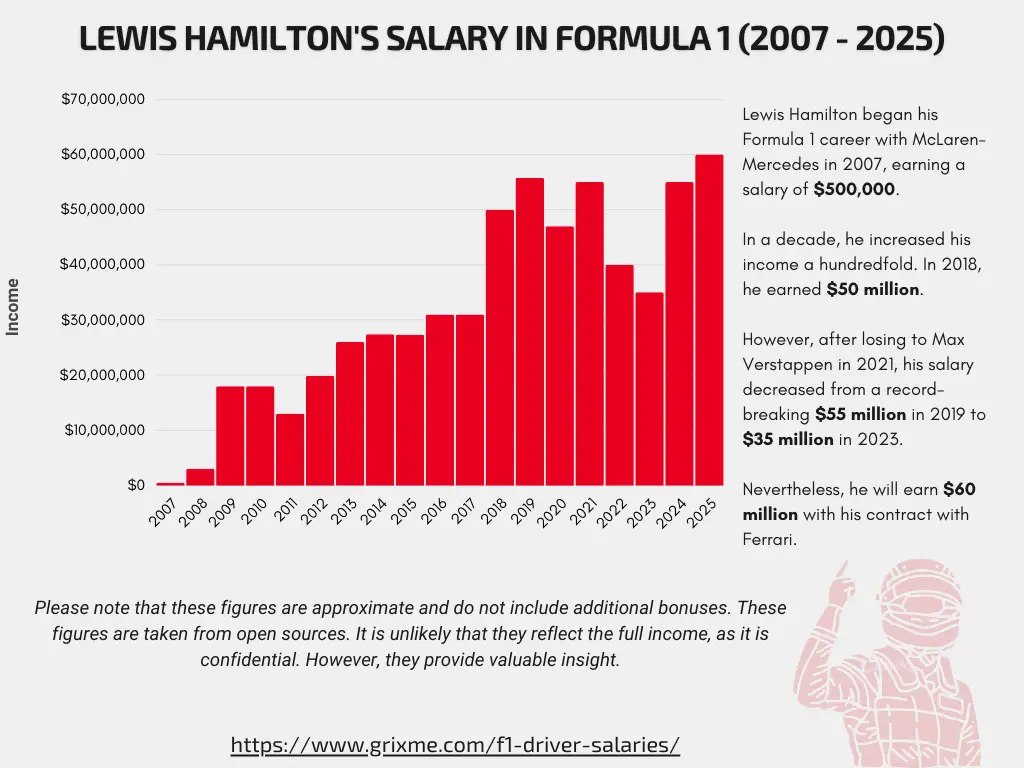
Have F1 Driver Salaries Been Rising in Recent Years?
Short answer: Absolutely. The money flow in F1 is on the up—and it’s not showing signs of slowing.
- Forbes estimates show a 23% increase in combined earnings among Formula 1’s top 10 drivers, rising from $258 million in 2023 to $317 million in 2024. That’s a significant increase.
- In 2025, eight drivers now command salaries of $10 million or more, flagging a broader pay bump across the grid.
- The GrandPrix247 sums up the scale: the total earnings for all 20 F1 drivers in 2025 stand at an eye-popping $413.85 million.
Why the increase? F1’s popularity is booming. More media contracts, bigger prize pools, and surging team valuations are all fueling bigger paydays. Teams are free to spend big on top talent.
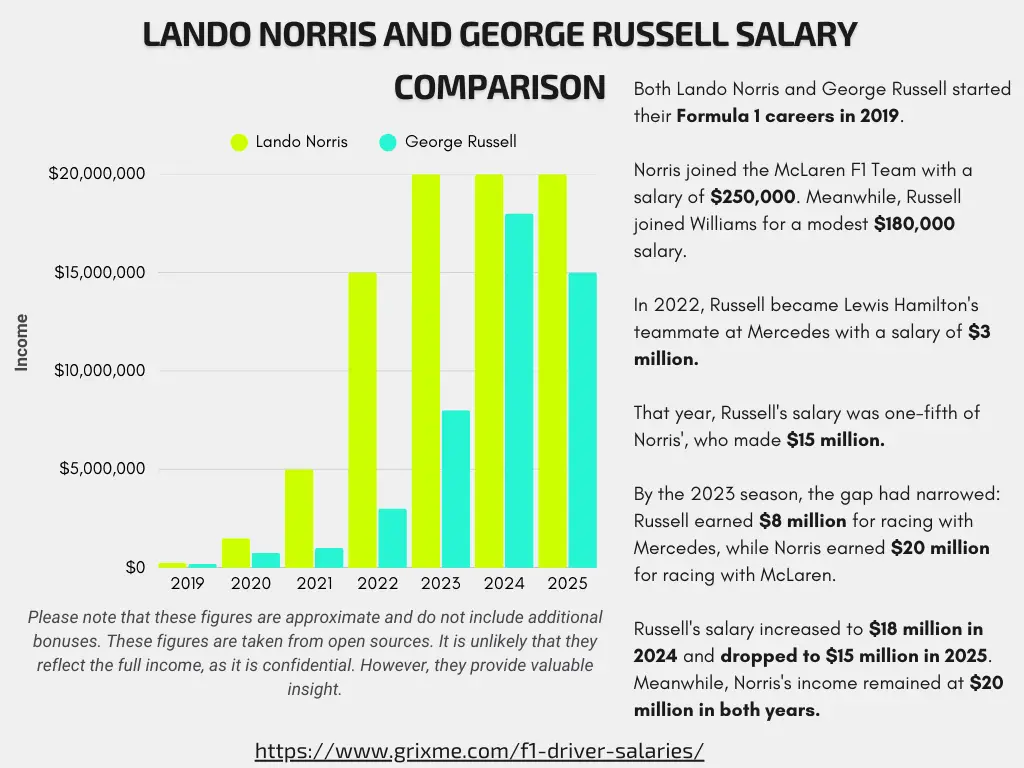
Why F1 Costs What It Does
So… Yes, F1 driver salaries are eye-popping—but in the grand economics of elite sport, they’re not the absolute peak. The true financial beast lies under the car:
Next-level engineering: A single F1 car costs around $12–20 million, with engines alone reaching up to $10.5 million!
The logistics are as majestic as the sport itself. Each team ships approximately 50 tons of cargo per season, including machinery, hospitality equipment, and tools. This costs over $8 million annually!
Global stages, premium pricing: F1 is a worldwide spectacle—from extensive media deals to sponsor circuits. Teams invest heavily so drivers deliver returns in brand value and performance.
What Isn’t a Myth
Driver prep isn’t a gym membership: Drivers undergo elite physical and mental training to endure the high G-forces and cockpit heat—preparation that rivals top Olympic regimes, but it’s just the tip of the iceberg, because climbing into F1 isn’t cheap.
Karting alone can cost $50,000 – $100,000 per year. Drivers typically need to invest around $5–$6 million to transition from karting to an F1 seat. Junior categories, such as F2, cost about $3 million per season, while F3 costs around $1.2 million. Here are our insights on how to become an F1 driver.
Overall, Formula 1 is a precise, spectacular, and expensive ecosystem. It is arguably the most expensive team sport on Earth. It takes a small army and a fortune just to show up, let alone win. And now, you’re not just along for the ride—you understand the dollars (and sense) behind the speed.

